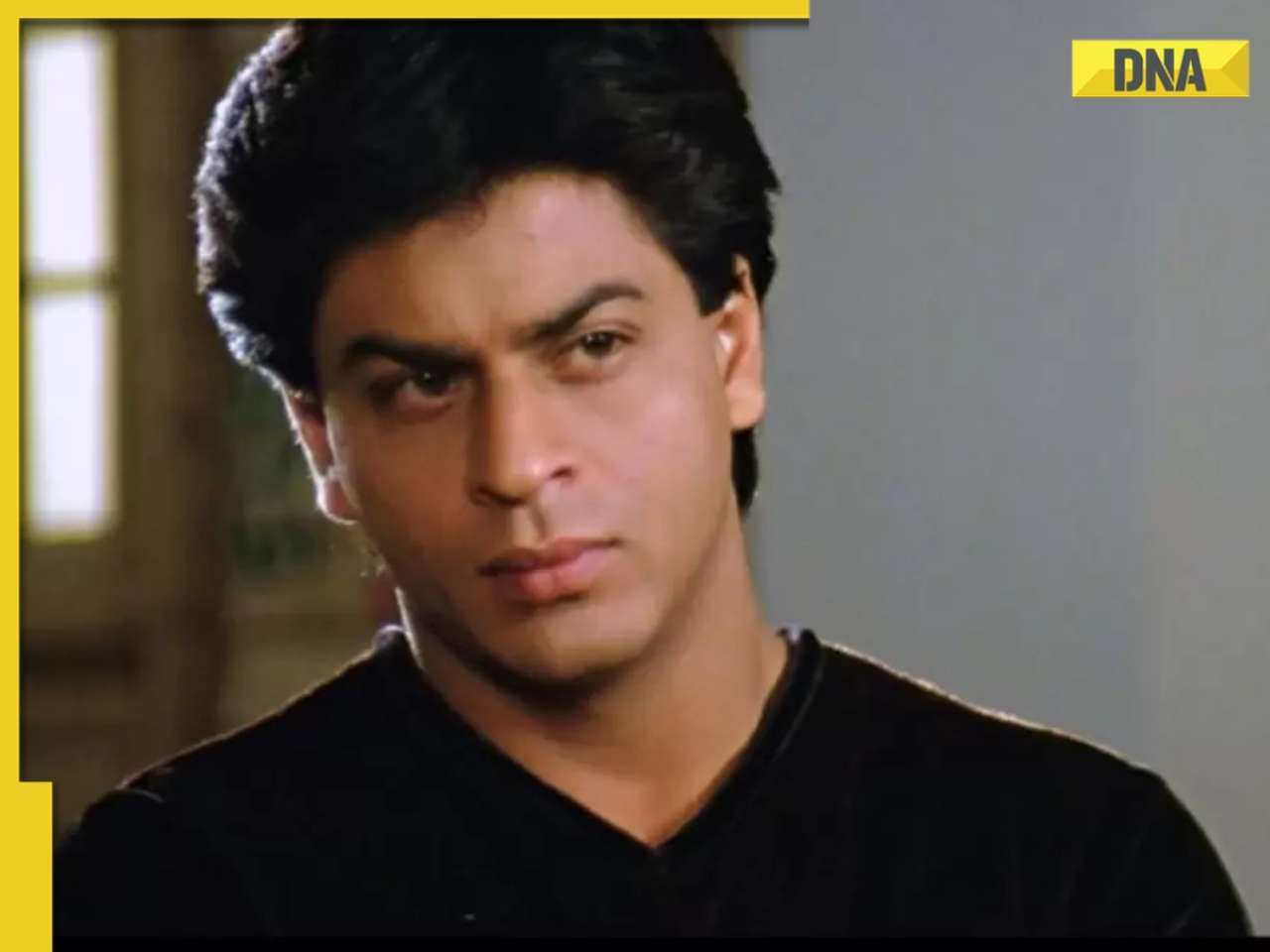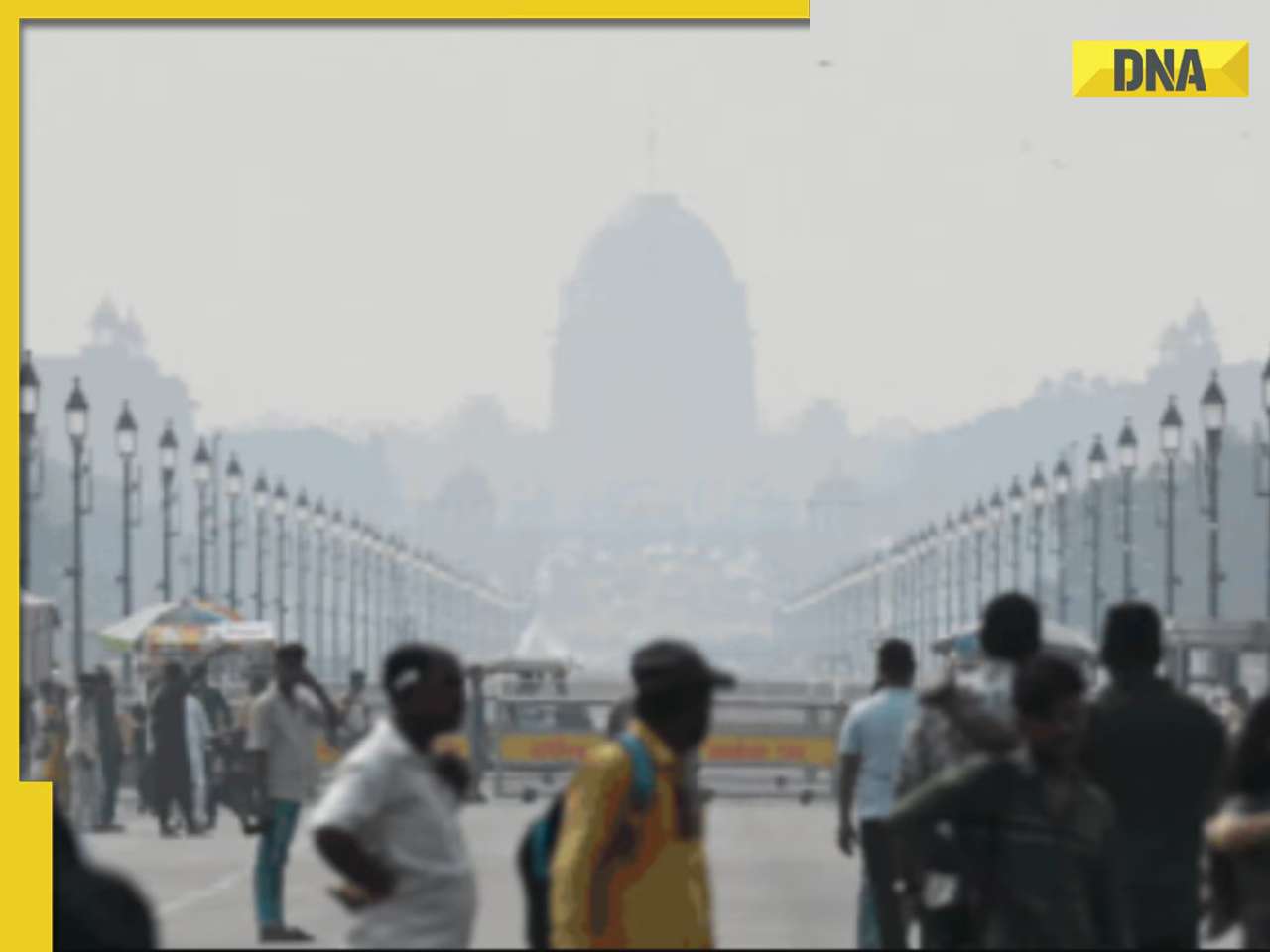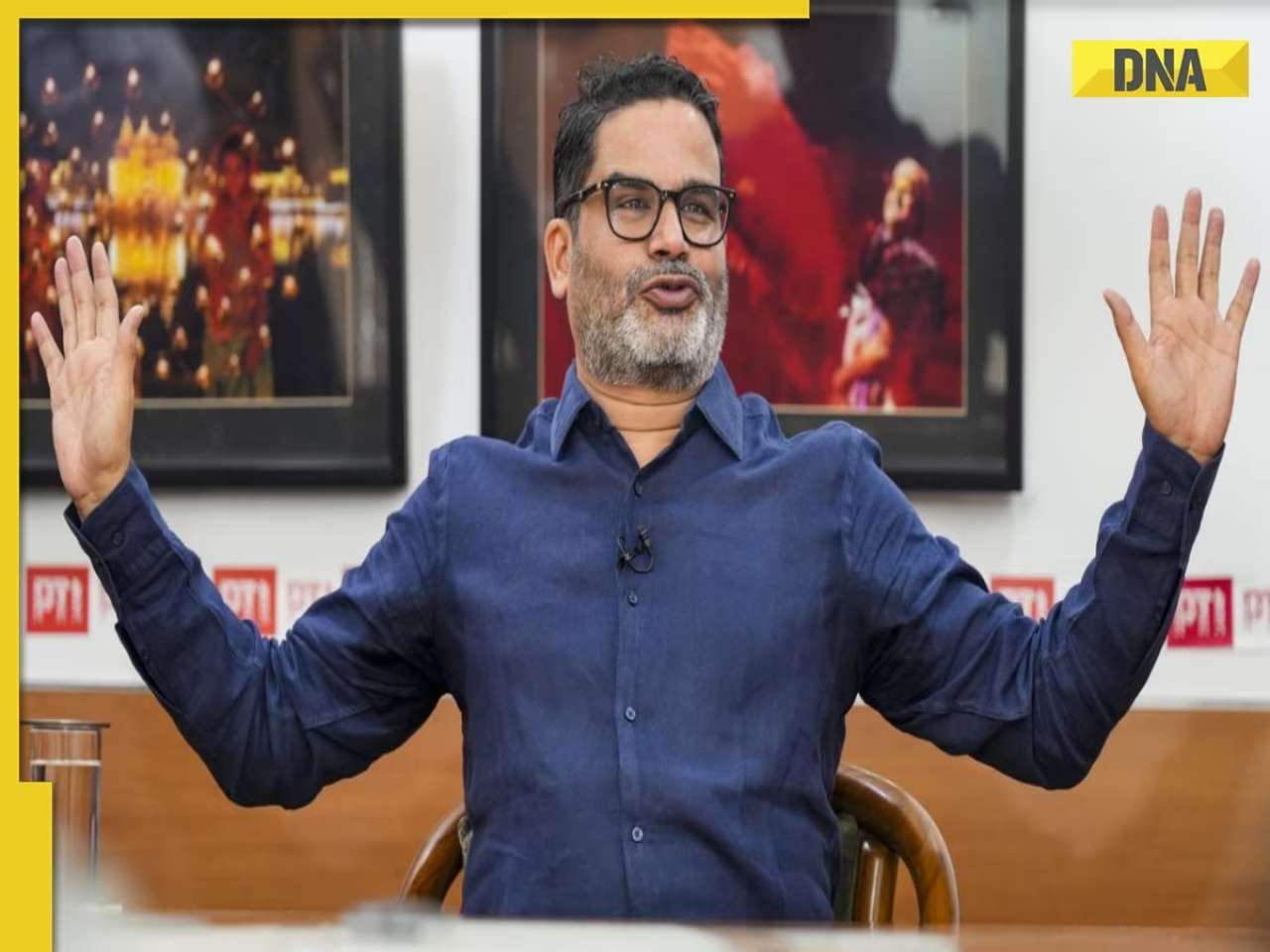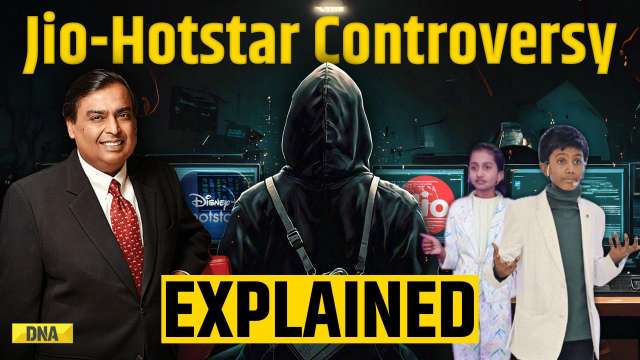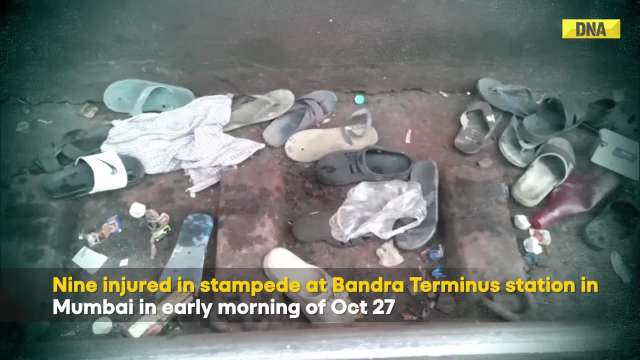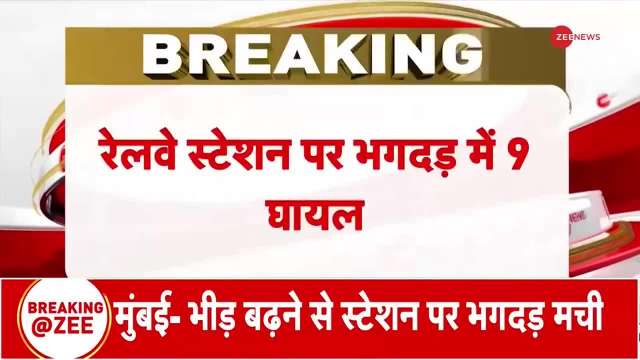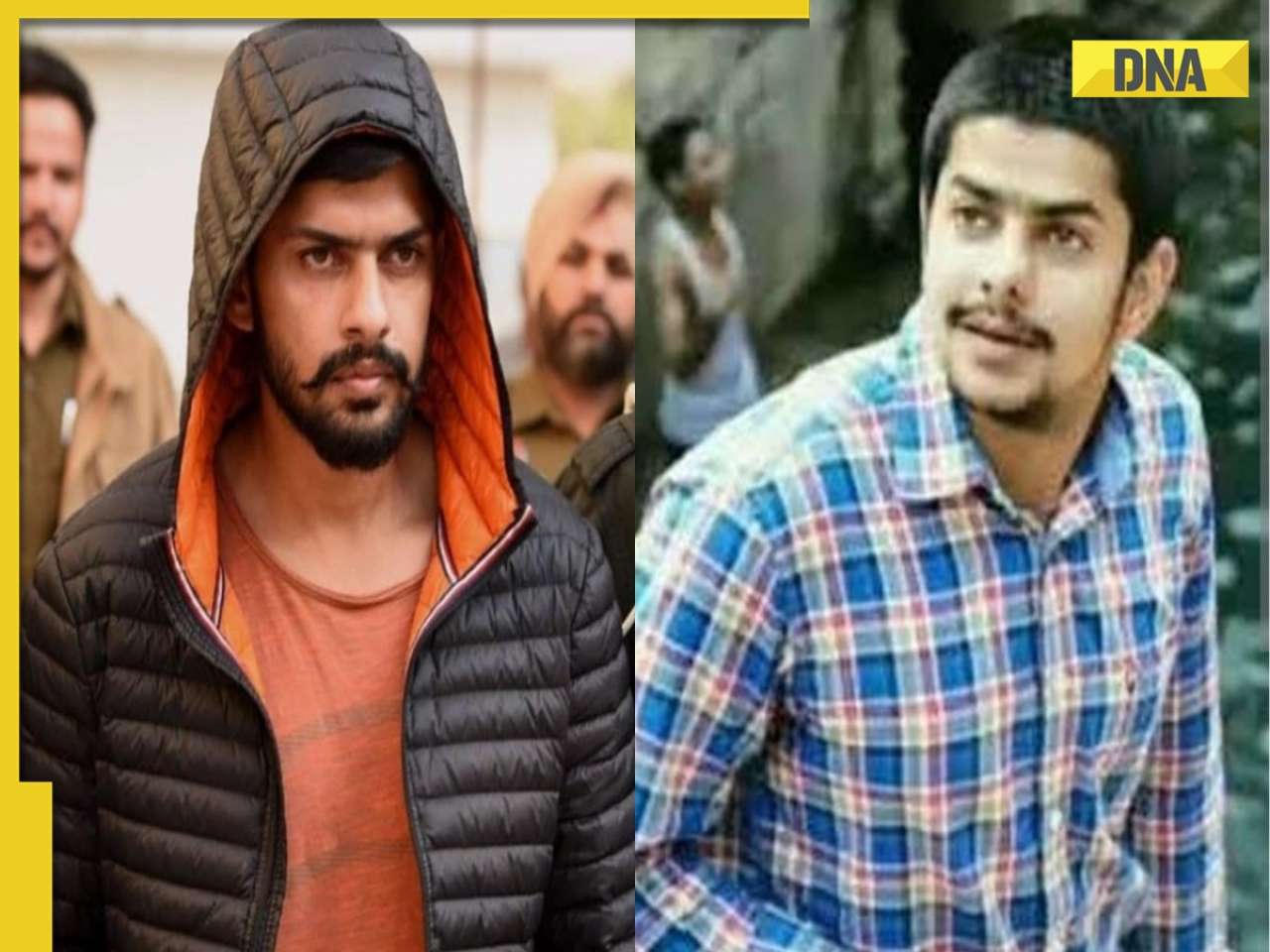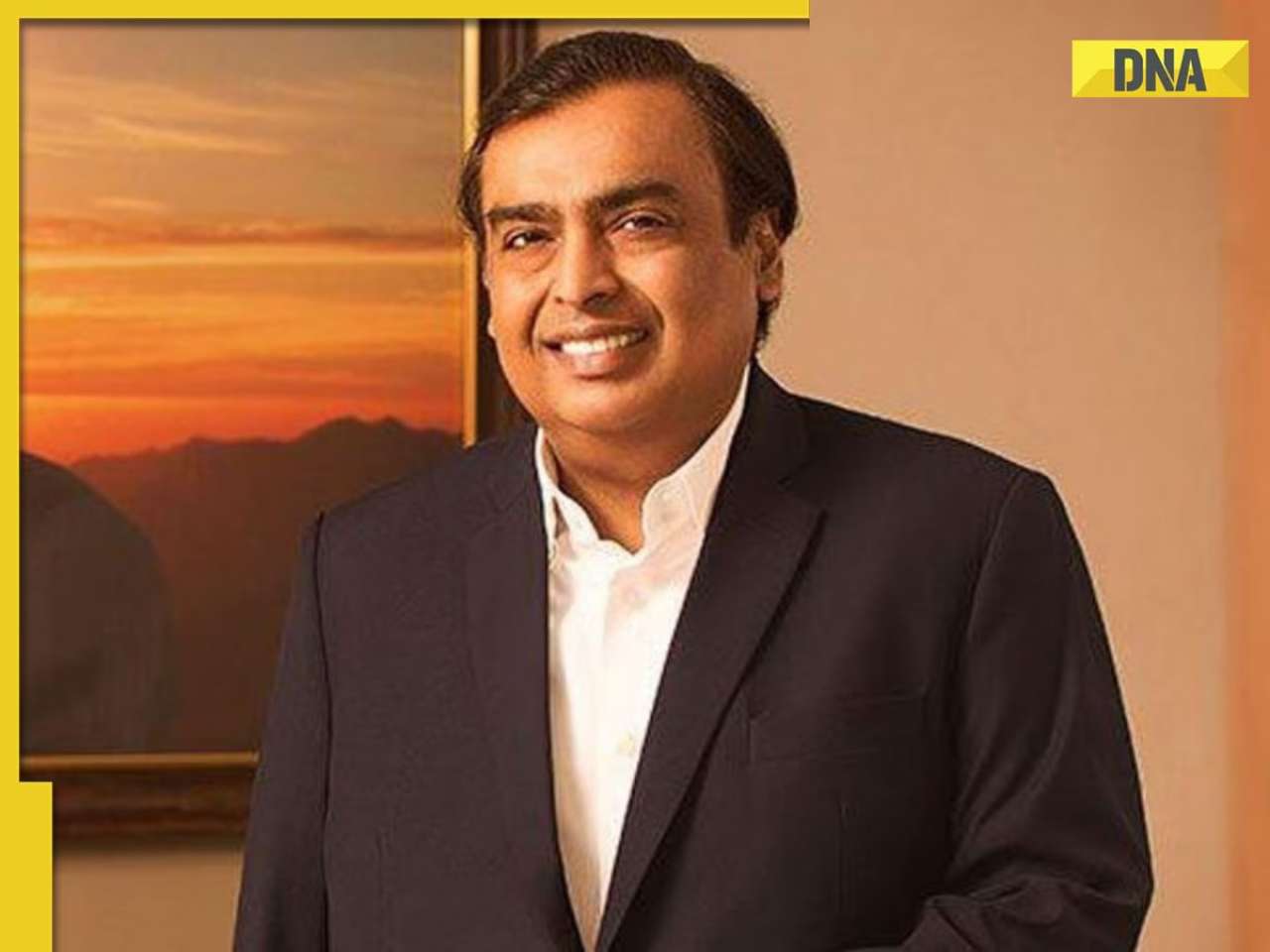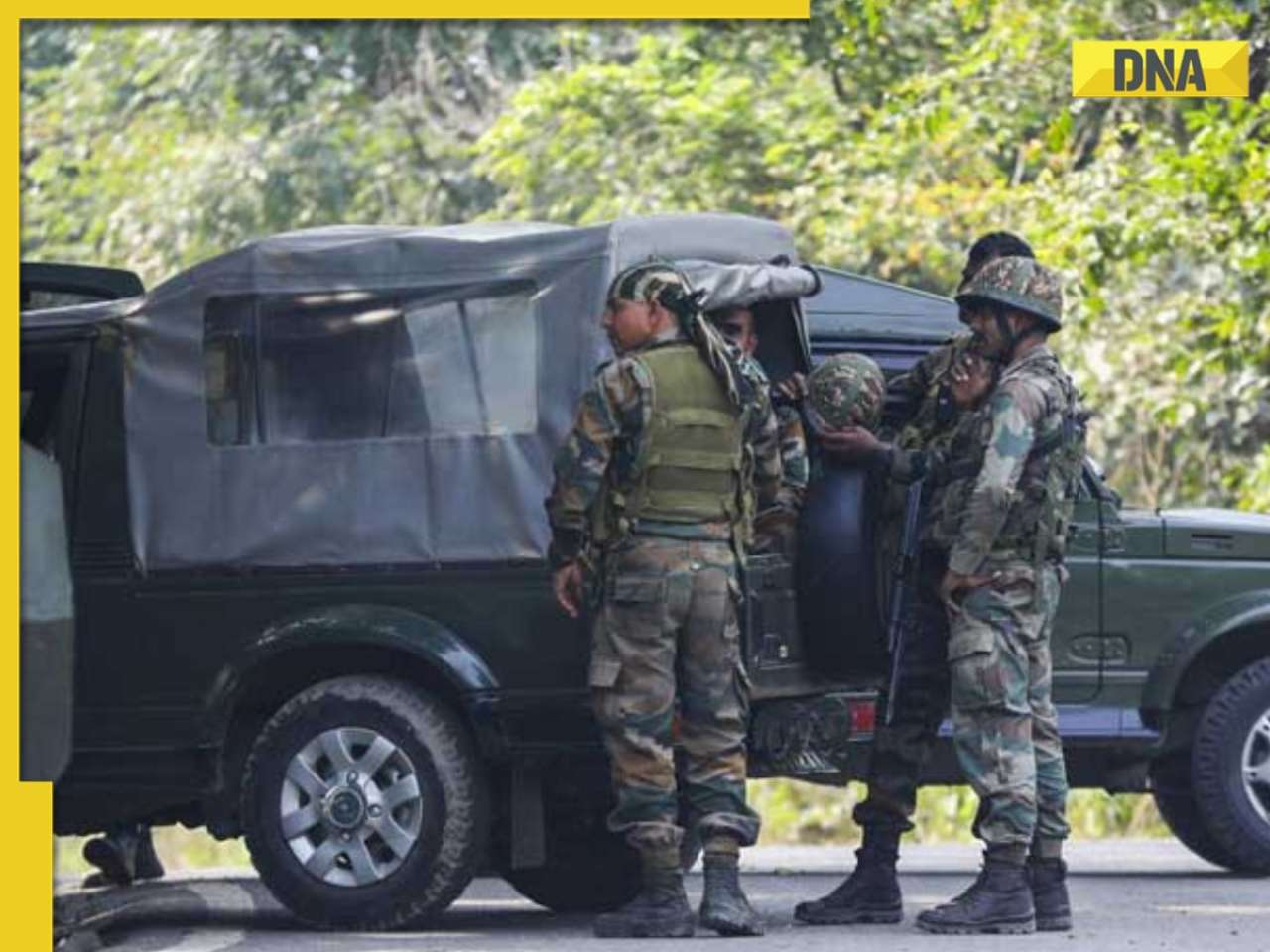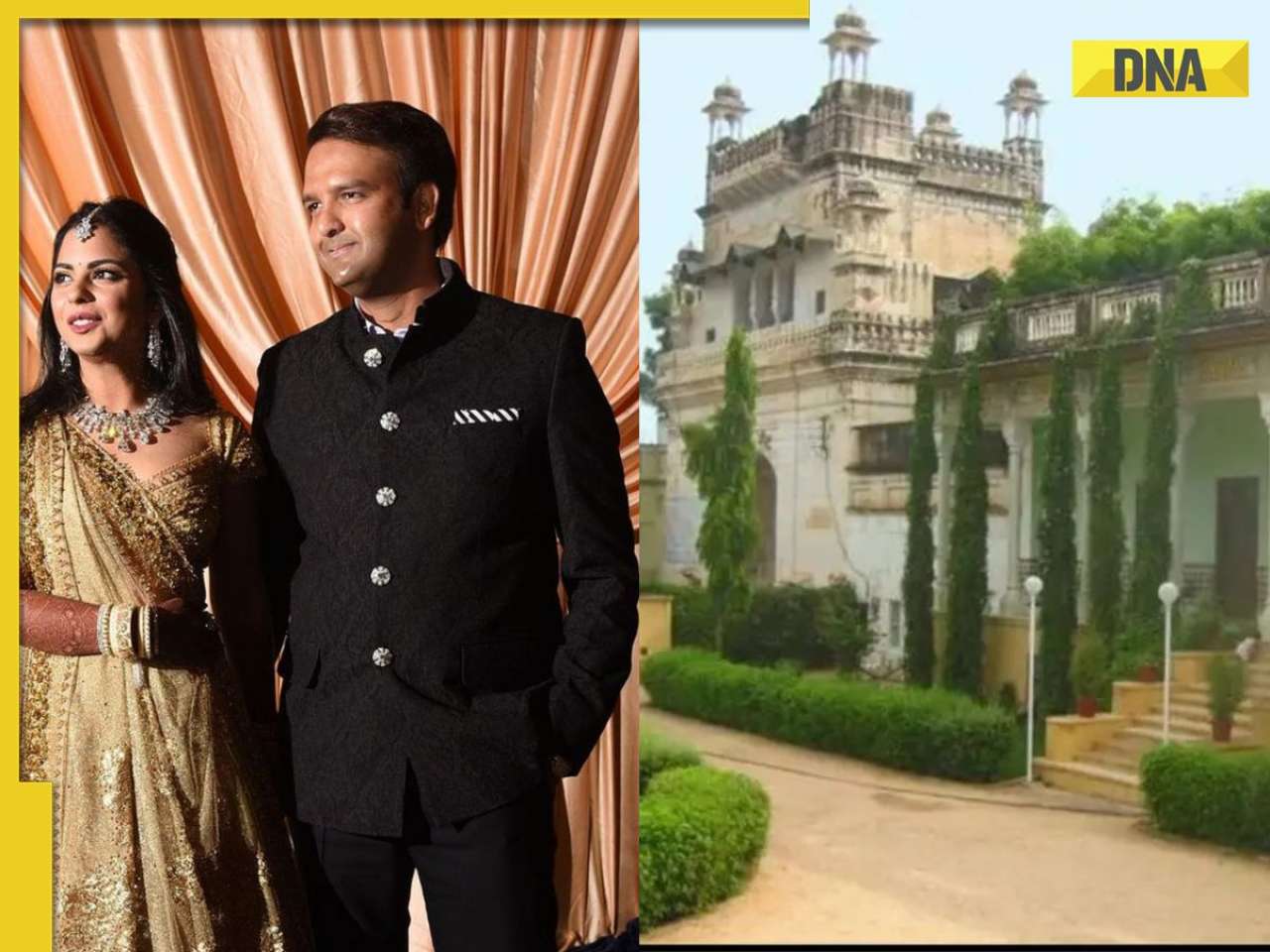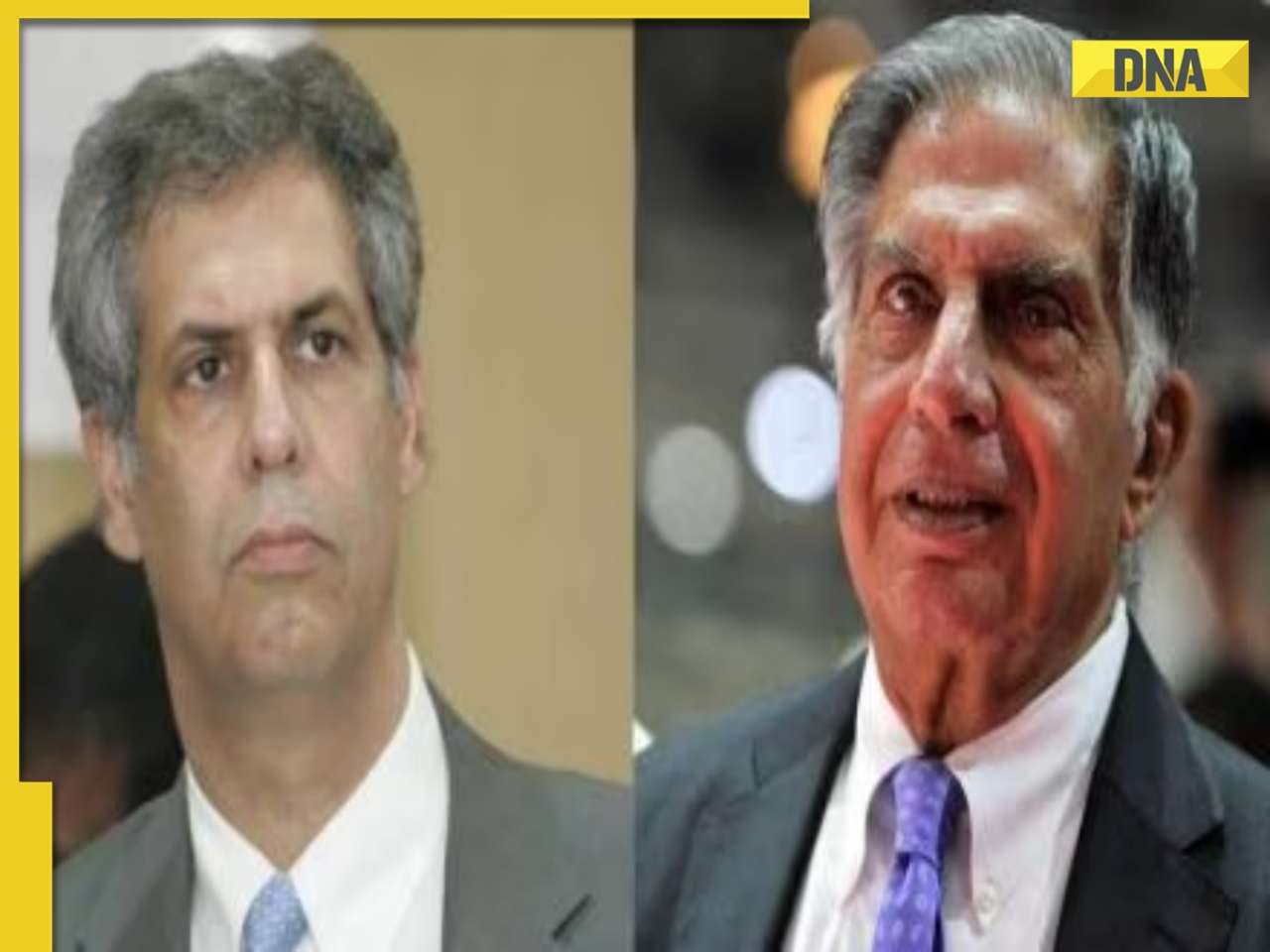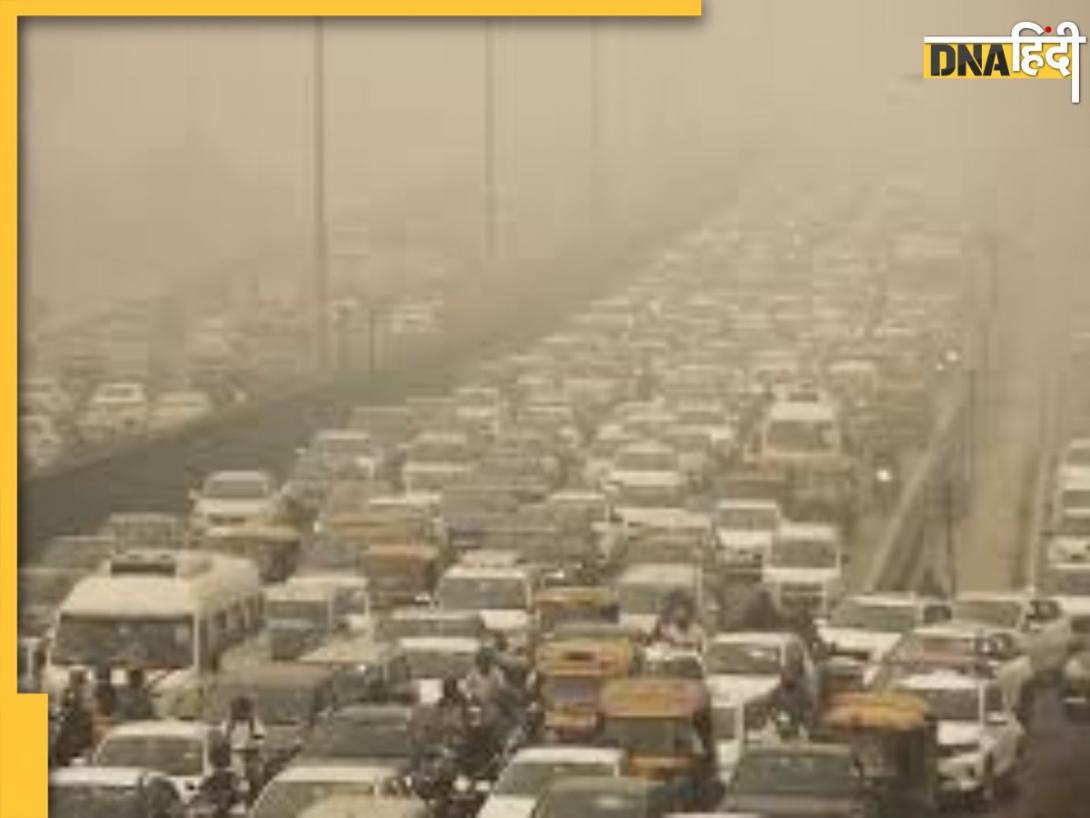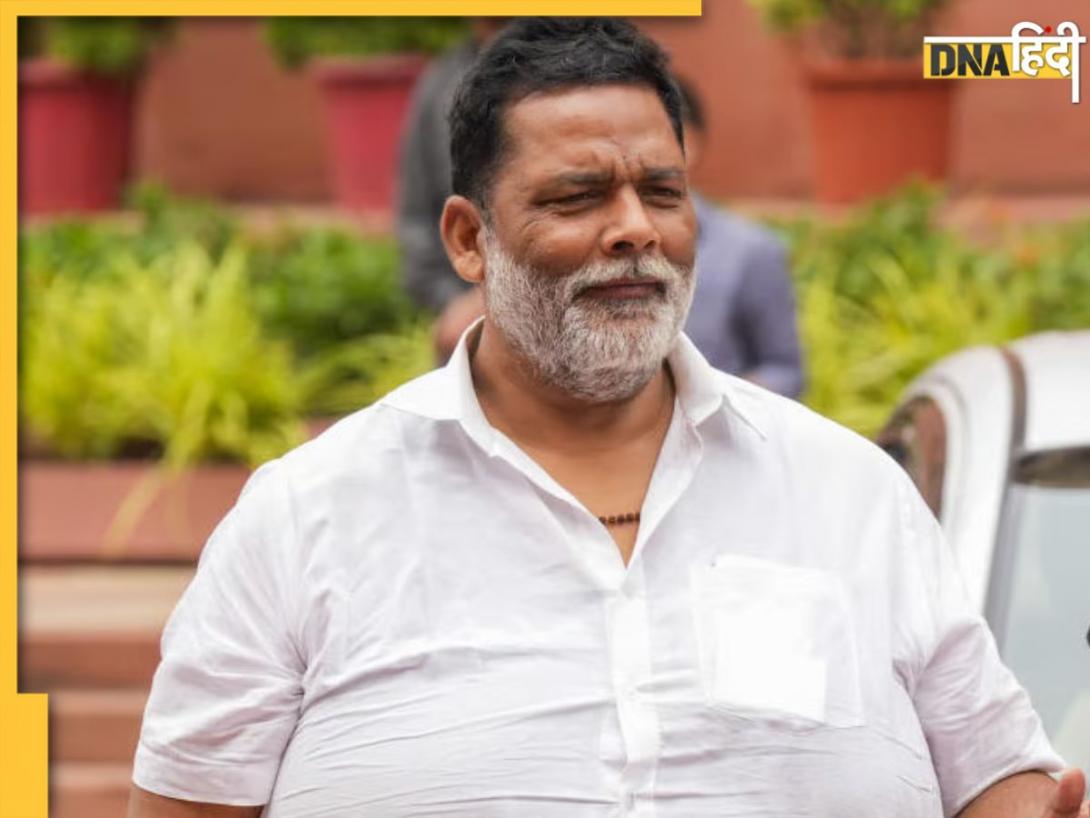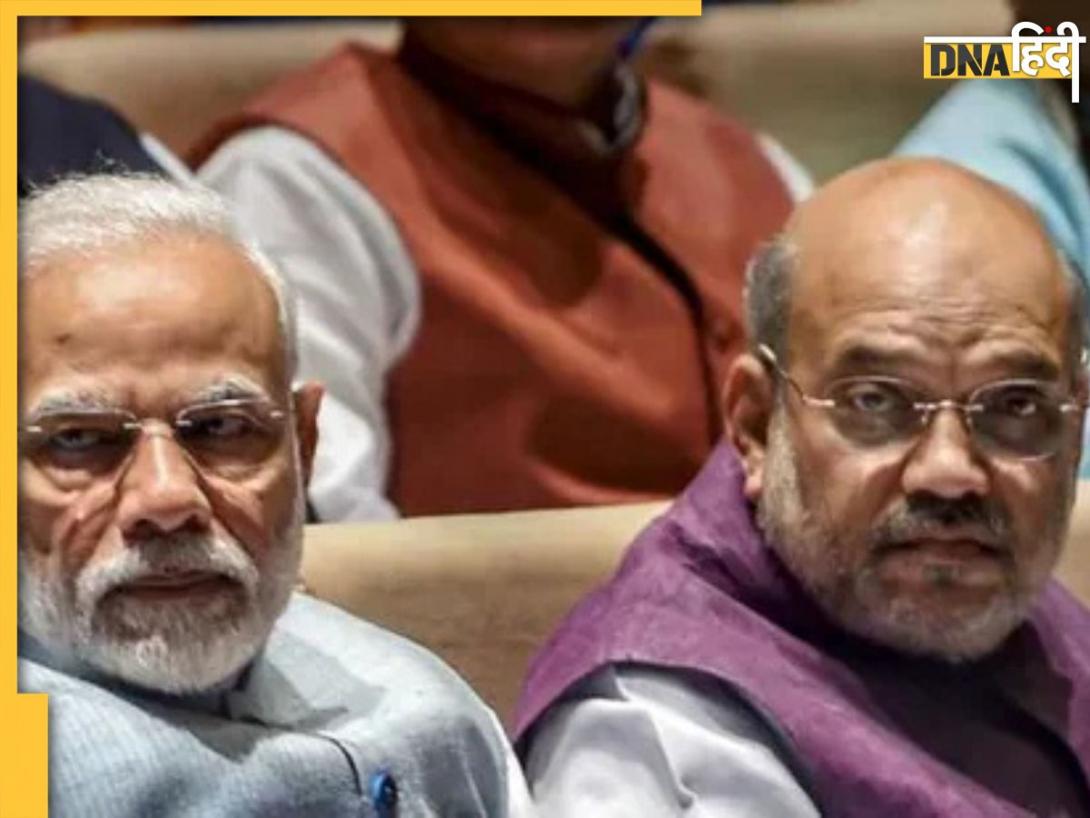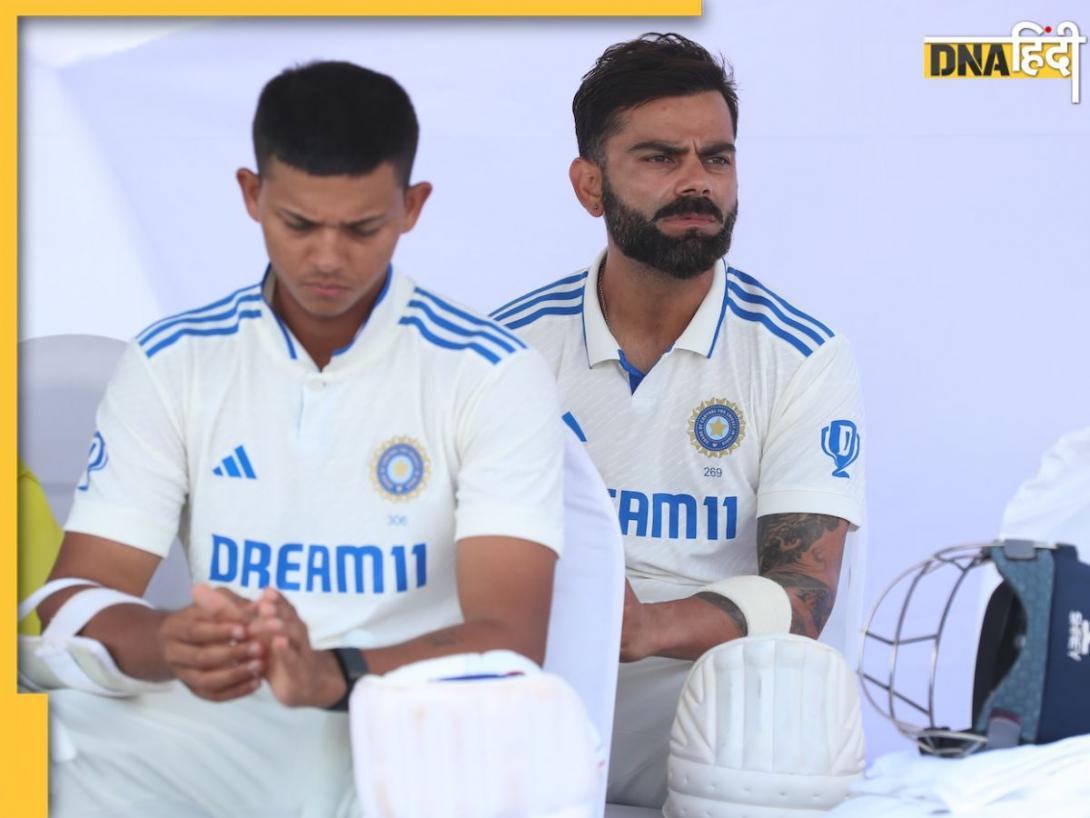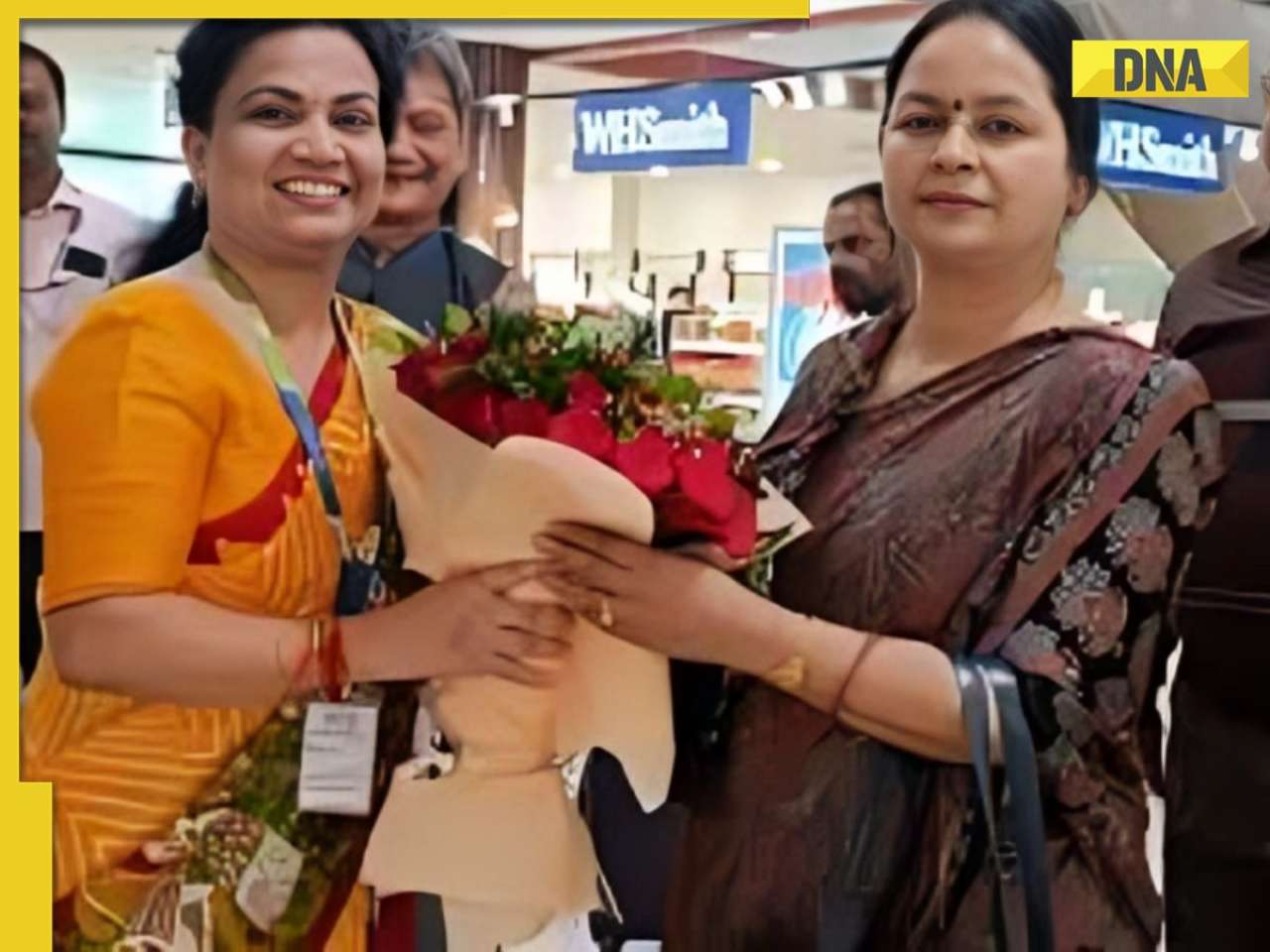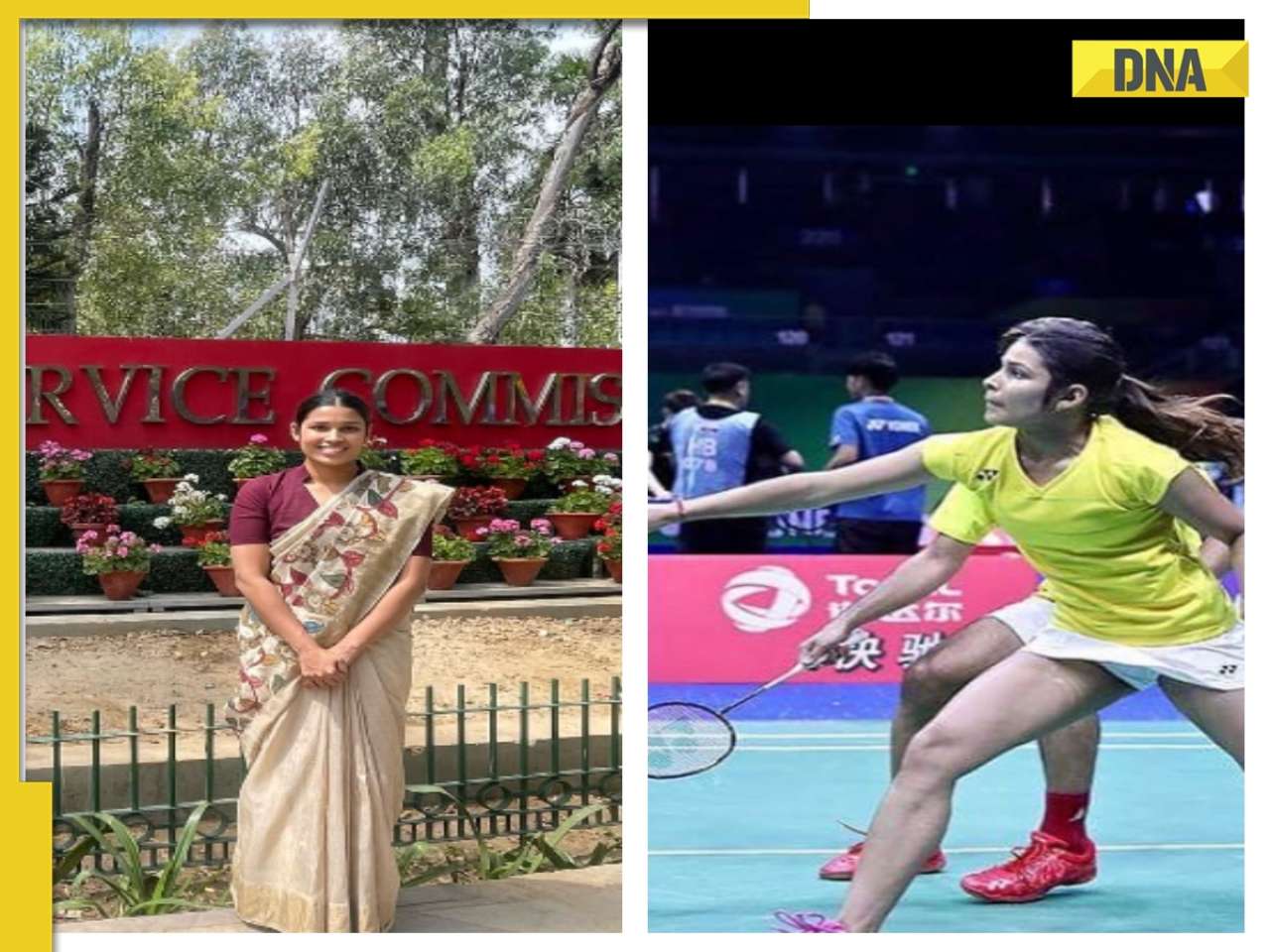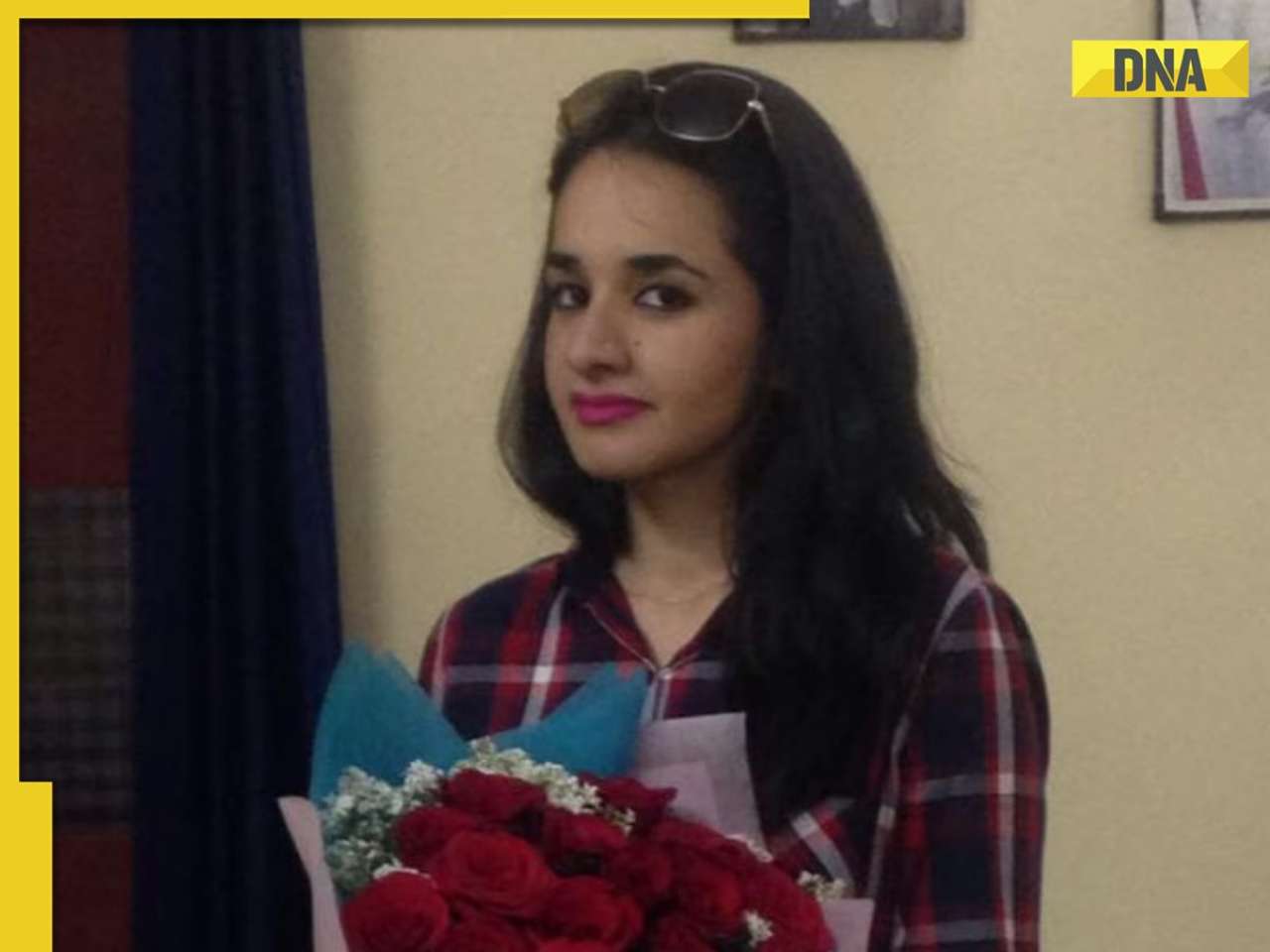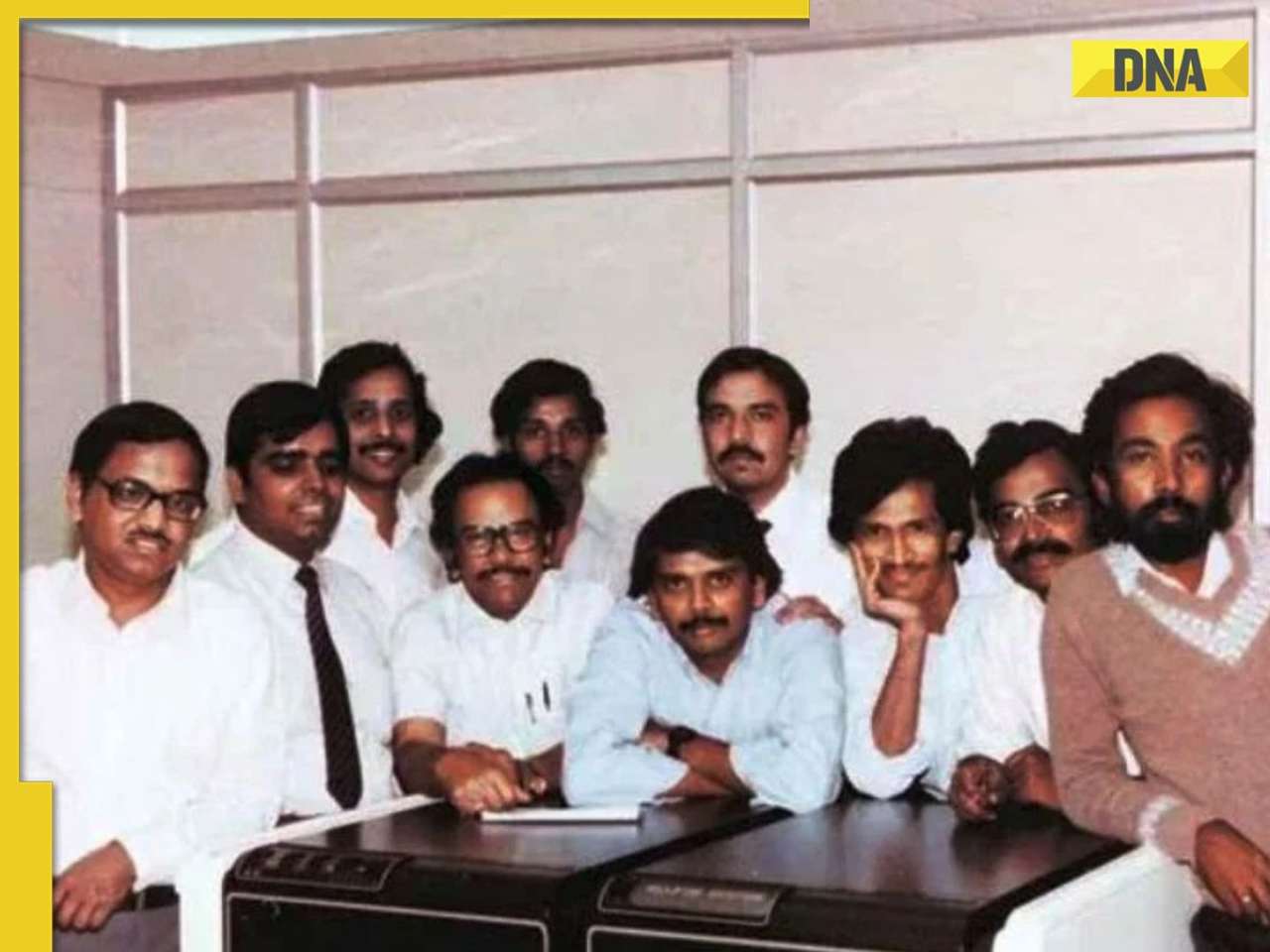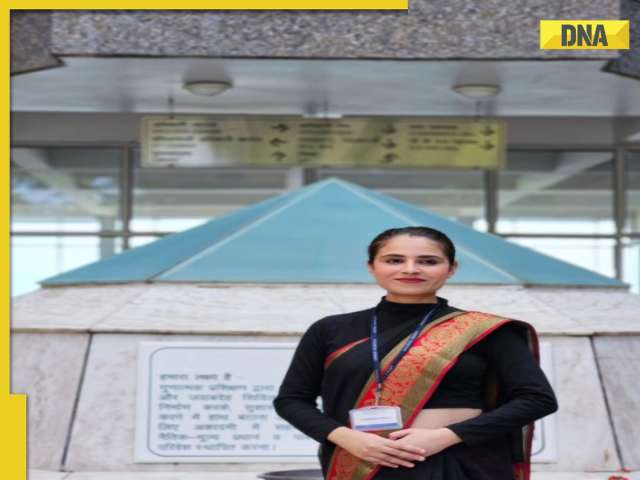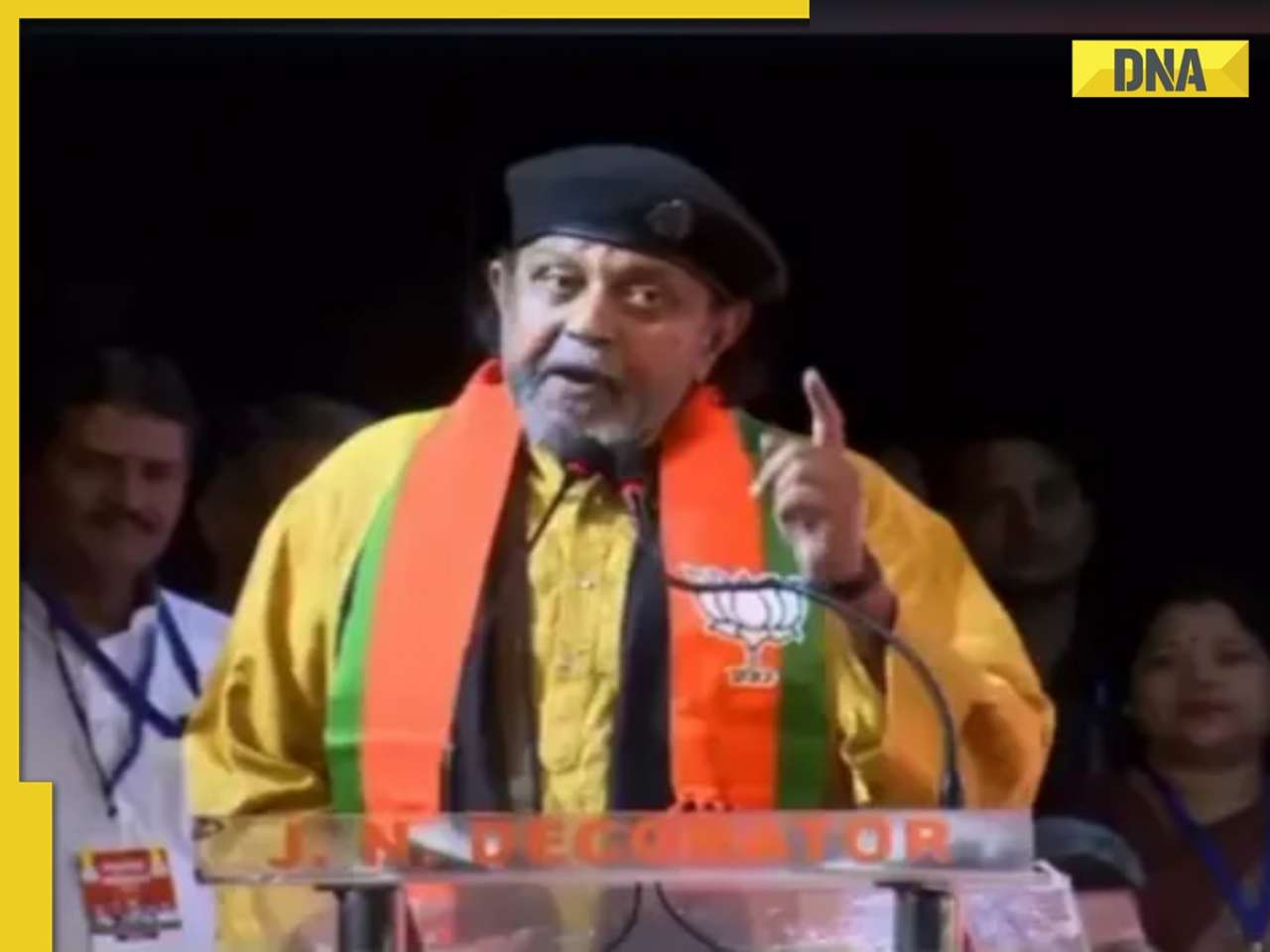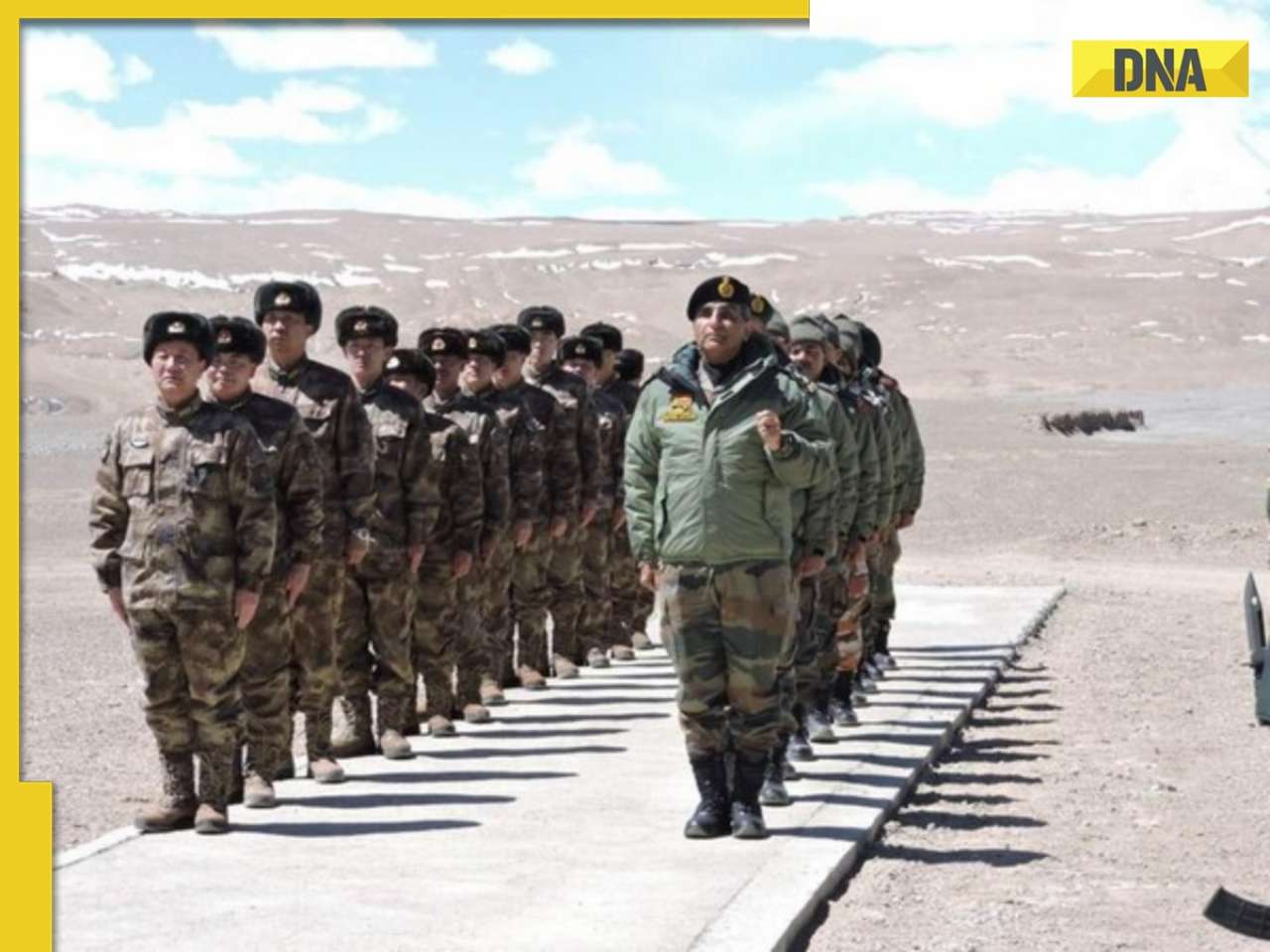- LATEST
- WEBSTORY
- TRENDING
JUST BEFORE MONDAY
Songs of Resistance: How music born out of revolutions stirs others
Bruised feet and a scorching sun did little to discourage 35,000 farmers marching from Nashik to Mumbai recently. For five days, over 180km, songs of resistance them to march on. Yogesh Pawar traces the origins and current relevance of such songs that have come out of revolutions and stirred others
TRENDING NOW
Dongar phodto amhi / Dagada zodto amhi / Raktachya cementani / dharan bandhto amhi / Sukh tumhala... dukh amhala
(We break mountains/ put rocks together/ mix our blood with cement to build your dams/ Yet you have all the comforts/ And we get only sorrow)
Jungle jeevant thevto amhi / Raan supeek karto amhi / Ghaamane bhizooniya / pik pikvito amhi / Anna tumhala upaas amhala
(We keep the forests alive/ make barren land fertile/ We bathe in our sweat/ to keep the fields green/ Yet, you have all the food/ And we have to go hungry)
As 38-year-old activist marching with the farmers, Sanjeev Shamanthul broke into this song, octogenarian Palghar resident Kamal Bohota's eyes lit up. The elderly adivasi's feet hurt and the sun made her dizzy as she marched bare feet with over 35,000 farmers in one of the biggest protest marches by farmers in recent times organised by the All India Kisan Sabha (AIKS), the farmer's wing of the CPI(M) in Maharashtra along with other unions. Others gathered around her in the shade of a tree along the National Highway 7, still a good 95 km from Mumbai also began ambling robbing the march of its momentum.
Enthuse and inspire
The song seemed to change all that. Bohota asked people around to help her to her feet. “This is a march for our dignity as human beings. Now nothing can stop us,” she smiled and began marching again, biting her lips to keep the wincing pain of her bruised feet at bay. The farmers, largely tribals, walked from Nashik to Mumbai to picket the Maharashtra legislative assembly and demand rights to the land they have tilled for generations.
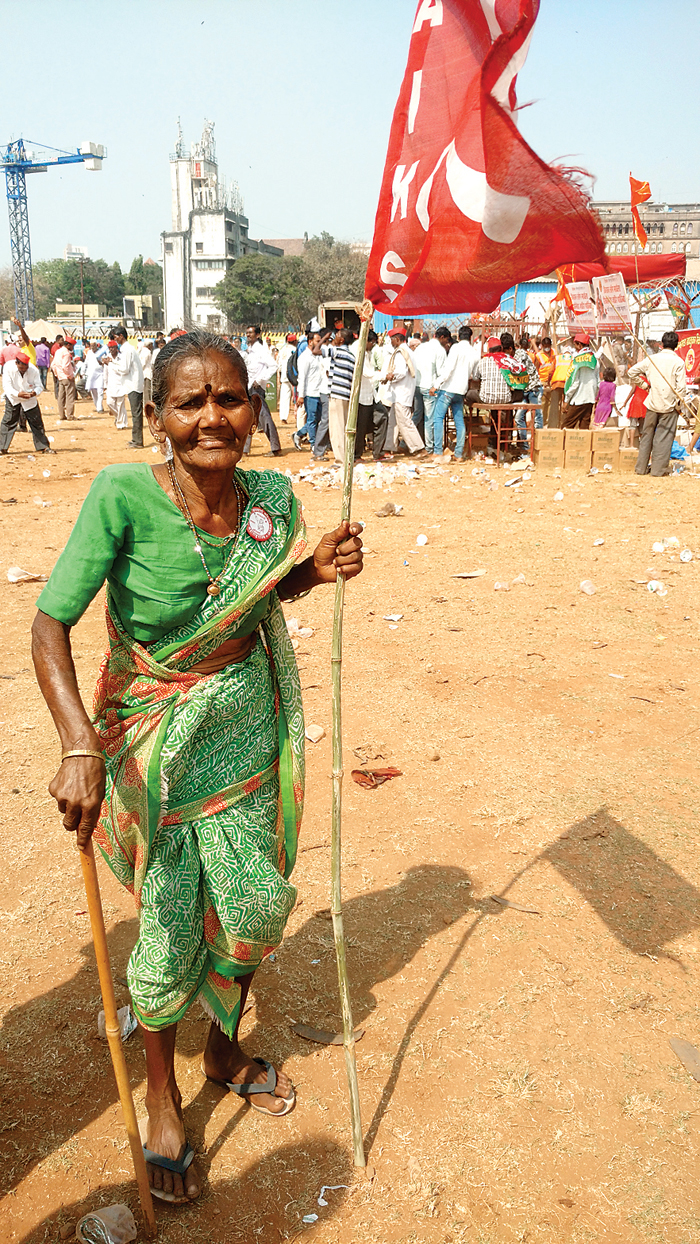
While their dignified march and their sheer numbers saw the tribal farmers make news headlines, the way their songs of resistance from various people's movements kept marchers mobilised, enthused and driven was also brought was not lost on those following this largest protest of its kind. Despite several marchers unable to formally read/write tv news crews, seasoned hacks (including yours faithfully) and even some activists were in for a surprise by how deeply aware the protesters were of what is going on in the country. A song they sang was quite telling: Saanga amhala Ambani, Adani, Tata kutha haay ho? / Saanga dhanacha saatha na aamcha waata kutha haay ho? Saanga dhanacha... (Tell us where are corporates have reached? / Tell us where they hold their stock of wealth and point out where is our share in it?) Ghaam shetaat amcha gala / Mallya-Modi aaytach gheun pala / Dhan chorancha, ha palnyacha phata kutha haay ho? Saanga dhanacha... (Our sweat soaks our fields/ Mallya-Modi make off with our hard-earned money/ Where is that path such theives take to run away?) Loni saarach tikda pala / Itha bhookena jeev ha zala / Dukaanwale dada amcha ration kutha haay ho? Saanga dhanacha... (They make off with all the cream/ while we go hungry without a morsel/ Brother shopkeeper can you tell us where our subsidised food grains vanish?)
Songs that set you free
Who better than activist, revolutionary balladeer and music composer Shahir Sambhaji Bhagat - who has been performing songs of resistance for over three decades - to put this into perspective. He says these songs cut across divides to find an echo because they speak of freedom. "The powers-that-be want only one kind of cultural ethos, the one they dictate, to be forced down everyone's throats. Movements like the Kisan Long March rudely awaken those drunk on power to remind them of diverse and multiple cultural identities. These identities find their own signature ways of articulating injustices and inequalities."

According to him given the hugely exploitative social structures in India "which keep discovering newer variants of exclusion and discrimination while cunningly reinforcing old ones," there has been a legacy of songs of resistance going back even to the early 15th century. “Brahmanical hegemony denied this rich legacy any documentation and consciously even tried to invisibilise it. But even without access to the written word, Dalits and Adivasis have found their own way of keeping it alive aurally,” he explains and adds, “I've often been gobsmacked on coming face-to-face with elderly women who don't know to read/write at all but can yet rattle off hundreds of such songs which they keep alive by singing.”
While echoing Bhagat's views on the way Dalit bhakti poets’ articulate socio-religious expression of the revolt of the masses against discrimination, Kolkatan, social historian Meghana Kashyap says: "This phenomenon originated in Tamil Nadu but soon spread via what we now call Karnataka and Maharashtra, sweeping through the whole of North India. These works represented aspirations of the downtrodden as against interests of the twice born," she scoffs but underlines how the Bhakti movement was itself peculiarly paradoxical. She cites works of saints like Ravidas, Namdev, Tukaram, Eknath, Chokhamela, Kabir who trash Brahmanical orthodoxy at every opportunity available and admits that while these poets are accepted and are still sung by a large section of Dalits as an inspiration for anti-caste agitations across the country.
“But it is not really free of agenda,” Kashyap is quick to point out. "These saint-poets were accepted as part of the Bhakti poet canonicals only because - unlike latter Dalit compositions which talk of radical change through aggressive, quasi-militant protests - these poets kept to the domain of the sacred, often borrowing both nuances and paradigms from the very same dogmatic Hinduism they sought to attack."
While agreeing with Kashyap, Bhagat credits Dr Babasaheb Ambedkar with recognising the power of culture to drive change and challenge inequality and discrimination very early on. “Babasaheb is on record to say how even ten of his speeches don't pack as much power as one song by a shahir who takes awareness to masses. Annabhau Sathe, Namdeo Dhasal, Narayan Surve have all been influenced by this thought to take his message forward.”
Bengali flavour
Kashyap mentions the rich tradition of protest songs in Bengal that dates back to the 19th century and colonial period. “There was a tradition of questioning the social hierarchies in the Vaishnav tradition which found a lot of following in the region. The renaissance was a period of questioning and this led to the creation of many songs questioning society on its norms and mores,” she explains and adds, “The Kolkata of that was almost at the epicentre of political activities and the brand of politics practised here was essentially exclusive to its identity as the former political capital of India.”
She cites the instance Bankimchandra Chattopadhyay (1838-1894), an eminent novelist of Bengal who wrote the iconic Vande Mataram. “It would go on to become the rallying cry that inspired nationalists to protest colonial rule. The anti-partition movement of 1905 against the proposed division of Bengal also saw processions, slogans and songs become the order of the day. In fact Rabindranath Tagore (1861-1941) composed Amar Sonar Bangla (My Golden Bengal) around this time which later became the national anthem of Bangladesh when it came into being in 1971.”
She also points out the bombing of Hiroshima and Nagasaki on 6th and 9th August, 1945, saw widespread fear of nuclear warfare and the creation of protest songs against this new danger. “The Sylhet-born Hemanga Biswas's Sankhachil comes to mind as one of the songs of that era still remembered by many.” The liberation war of Vietnam against America became a huge inspiration for many in the Left she points out, “This led to the protest chant, Amaar naam, tomar naam; Vietnam Vietnam (My name, your name; Vietnam Vietnam) and Lorai lorai lorai chai,/Lorai korey bachte chai;/Lorai korey peyechi ja,/Lorai korey rakhbo ta. (We need to fight, fight fight / Fight in order to survive;/ All that is achieved by fighting/ Will have to be retained by fighting),” and adds, “By 1975 this momentum saw wave of urban protests at Brigade Parade Ground (Maidan) led by the Left against the Emergency. Again new songs of resistance were being sung. Only they now took on a bite and aggression which had still not been seen.”
Over a 1,800 km away 65-year-old Shanker Singh, a founder member of the Mazdoor Kisan Shakti Sanghatan along with Aruna Roy and Nikhil Dey agrees that biting aggression of the songs of resistance is necessary. Acknowledged as one of India’s leading figures in people’s theatre, for nearly two and a half decades he has combined activism with the power of people’s communication through street theatre, puppetry, song, and drama to strengthen the voice of the poor. In a signature style he underplays his uncanny, incisive wit and the keen political insight with which he instinctively communicates complex issues in an idiom familiar to the people.
“Yes. It is about making everything palatable to the masses but this is about giving myself also some relief. Just shouting slogans and making fiery speeches about the same issues again and again can become monotonous. This adds that element of entertainment without taking away from the spirit of what is being said.”
Another 1800 km to the South, Bangalorean writer, poet, artist-activist Du Saraswathi echoes Singh. She feels the songs' outreach helps take the message of a movement far beyond speeches/talks. “It is important that such songs not only articulate concerns of people they seek to connect with, but also borrow their imagery, music and context. Otherwise they just cannot become effective tools of mobilisation/awareness generation.”
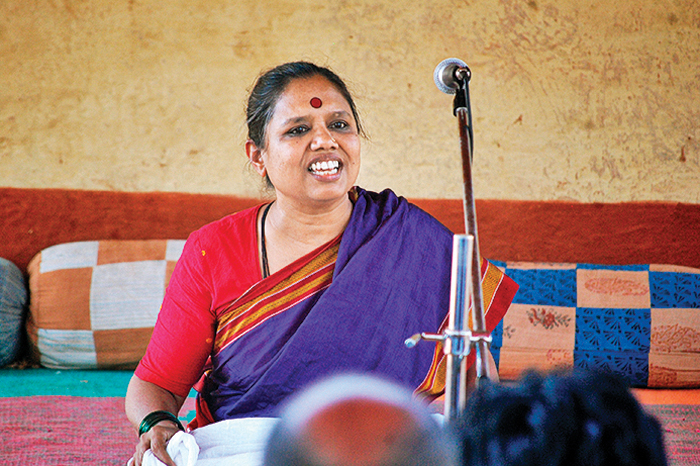
She cites the instance of Kannada of Dalit poet, playwright, philosopher and cultural activist from Kotiganahalli Ramaiah who has written several such songs of resistance. “These are sung all over Karnataka by many belonging to different people’s movements but we need to revive and popularise the works of Kadiremmevve, Aydakki Lakkamma, Sule Sankvve and other non-Brahmin women who wrote vachanas (a genre of Kannada poetry) during the 12th Century. Whether them or Mudnakudu Chinaswamy, Subbu Holeyer, Anusuya Kamble, Hulikunte Murthy, they have still to be given their deserved pride of place for their immense socio-literary contribution,” laments Saraswathi.
Communist connect
Fellow Bangalorean and singer-composer Sunil Koshy (who has composed for Kannada films) speaks of how the narrative of the oppressor versus the oppressed has always resonated in the songs of resistance in God's Own Country - Kerala. He recounts how this began when Socialist winds blew through the state in the late 50s. “A Communist Party-led ministry had been elected in Kerala in 1957, the 2nd elected Communist ministry anywhere in the world, after San Marino (off Italy). A special obelisk was erected in in memory of 1857 First War of Independence martyrs which included many unsung peasants and workers gave up their lives. A song to mark their martyrdom Balikudeerangale was written by legendary poet-lyricist Vayalar Ramavarma, and composed by the equally illustrious G Devarajan. This pair went on to become the most famous lyricist-composer team in Malayalam cinema bringing the songs of resistance from the streets to celluloid.”
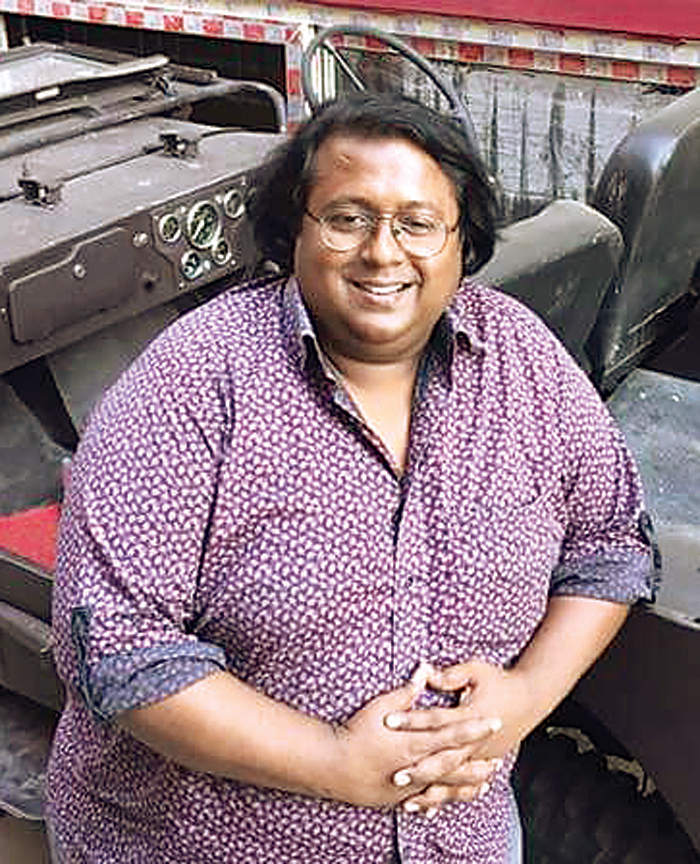
He remembers how the Communist agenda has been part of the narrative ever since. “Thulabharam(which started off with the socialist refrain 'Workers of the world unite, we have nothing to lose but our chains!) Punnapra Vayalar (where the song “Comrades, Onward!” became a chartbuster), Mooladhanam(Named after Marx’s seminal work, this film began with a song 'From every drop of blood shed for the cause, will arise a thousand comrades more!') Ningalenne Communistakki, Anubhavangal Paalichakal, Neelakkannukal (A song here went, "We refuse to die, we refuse to be cowed down, and don’t you dare think you can make us go on bended knees to kiss the Capitalist behind!)." According to him songs from these iconic films have gone on to become movement anthems used to rouse, enthuse and mobilise. “In that sense the songs of resistance have come full circle.”
Singing socialists
Back in Mumbai, founding member of Stree Mukti Sanghatana, a women's rights advocacy organisation Jyoti Mhapsekar remembers how socialists who helped create both the state of Maharashtra and the labour laws in India have also contributed in a big way in keeping the legacy of the songs of resistance going in Maharashtra. Having been raised in a commune by her socialist parents she should know. “Entertainment, awareness building, social responsibility and mass outreach were all packed together in these kalapathak songs which called out capitalists and oligarchs,” she remembers. Little wonder then that she would go on to create the iconic women's rights play Mulgi Zhaali Ho. “Both performing other lyricists' songs and composing my own came naturally to me since we'd been raised in that atmosphere.”
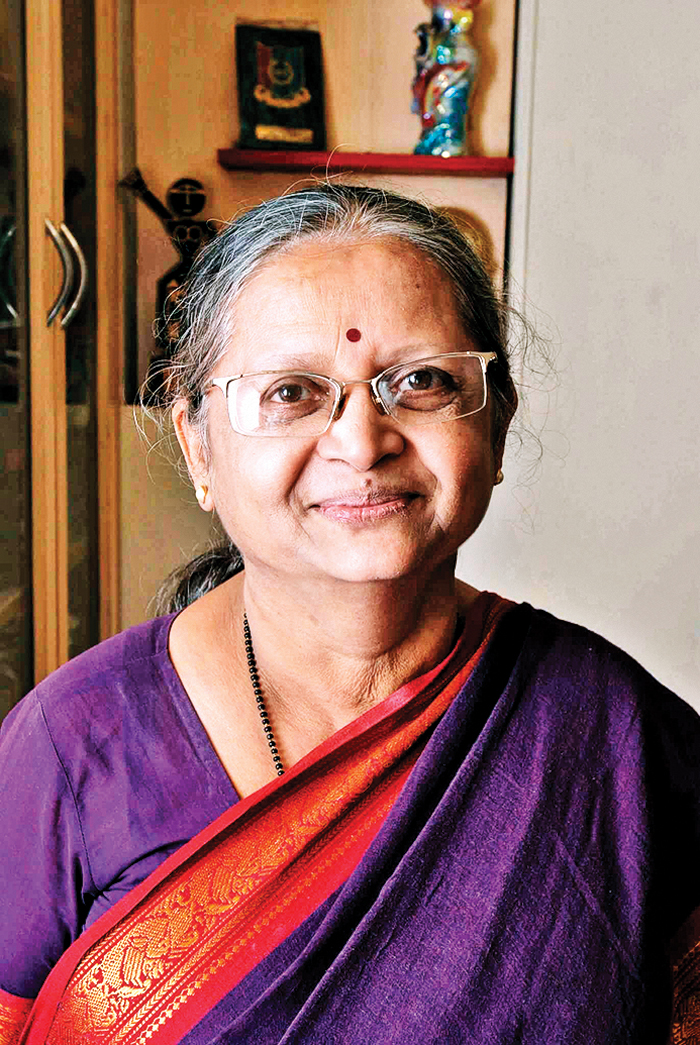
She also points out how this genre always responded to changing facets of society with changes in both form and content. “Look at our song Ya deshatlya baayana, aaya bahinina saangaya zaayacha haay ga/ Eki karun ana ladha pukaaroon hyo turung phodaycha haay ga (We want to go call of women of this country/ the mothers and sisters/ to unite and fight/ to break down this prison of patriarchy) or the Awaaz-E-Niswa song Mee Chaangli Tu Ghabrau Nako/ Aisa Khat Mein Likho which raised the issue of Muslim women left behind by their spouses who went to the Gulf for work. Such women faced both unwelcome attention from men as also unnecessary scrutiny from patriarchal family and neighbours.” It is this ability to stay with the contemporary that makes songs of resistance unique she insists.
Contemporary concerns
And who can talk about this aspect better than well-known classical vocalist Shubha Mudgal who has often used music as a platform to speak of social issues? “For decades I received requests to perform and help raise funds for awareness campaigns/social issues. As an artiste I had to decide- Do I just pick from my popular repertoire or include material relevant to the cause? Do I just go and belt out Abb Ke Sawan at an event honouring soldiers martyred in a war, or at an event raising funds for riot victims? Since this issue concerns me I have, over the years, worked on developing a repertoire that addresses specific issues close to my heart including poetry of protest and dissent,” she explains.
While she too credits saint-poet Kabir as the most powerful voice which spoke out against dogmas surrounding formal religion, as early as in the 16th century she underlines how others like Lalleshwari of Kashmir in the 14th century, and Gorakhnath who is believed to have lived in the 11th century have also pioneered in this direction. She feels what Kabir and the poets before him forms a continuum of sorts with a contemporary poetry of Dushyant Kumar or Gopaldas Neeraj. “The continuum is reflected in the fearlessness with which all three raise their voices. The ring of conviction in their work is inspiring, although their concerns may have been very different.”
While Mudgal has performed at several full length concerts dedicated to songs of resistance she admits it is difficult to cite a favourite. “In the recent past, Dushyant Kumar’s ghazal with the following sher /couplet has become a favourite: Tera nizam hai sil de zuban shayar ki / Ye ehtiyat zaruri hai is bahar ke liye. (Despots have always tried to silence poets / to ensure there oppression is not called out) It is acknowledgment of the strength of art and poetry. It represents fearless, courageous freedom that art endows on its believers and practitioners. Written during the Emergency, this ghazal holds true even in the times we live in today.”
Incidentally it is the late Dushyant Kumar's song which got sung so many times at the Kisan Long March too!
Ho gayi hai peer parvat si, pighalni chaahiye / Is Himalay se koyi Ganga nikalni chahiye
(Sorrow has reached gigantic proportions like mountains, its time a soothing Ganges emerges out to alleviate the pain)
Aaj ye deewar pardon ki tarah hilney lagi / shart lekin thhi, ki yeh buniyaad hilni chahiye
(Yes, the walls have begun to tremble like a sheet of paper but our deal was to get the foundations shaken
Har gali mein, har shahar mein, har nagar, har gaon mein / Haath lehraatee hue, har laash chalni chahiye
(In every alley, road, town and village, every suffering body rise in protest)
Sirf hungaama khada karna mera maqsad nahin / saari koshish hai, ki yeh soorat badalni chahiye
(Rabble rousing is not my aim, my effort is to bring about change.
Mere seene mein nahin, toh tere seene mein sahi / Ho kahin bhi aag, lekin aag jalni chahiye
(If not in mine, then maybe yours – wherever it may be lit, but the point is that the torch must be lit!)
Resistance goes post-modern
In an era when rock, rap, pop, funk and fusion appeal more easily to larger musical sensibilities, it is no surprise that some are taking songs of resistance to the masses with this genre. One of the prominent names that comes to mind is Kabeer Shakya, who founded India’s first Buddhist rock band - Dhamma Wings. Having been raised in a home that practised Buddhism, the tenets of Gautam Buddha and B R Ambedkar came naturally to him. These philosophies got further crystallised during a short stint at a monastery in Bodh Gaya, Bihar to further learn the principles of Buddhism. “There I thought of making these teachings more accessible. The best way I knew was to weave it into music. While I speak of the larger values of humanity, I take care that the pacifism comes lined with a clear message of resistance and assertion.”
Kamal Bohota would surely like that...


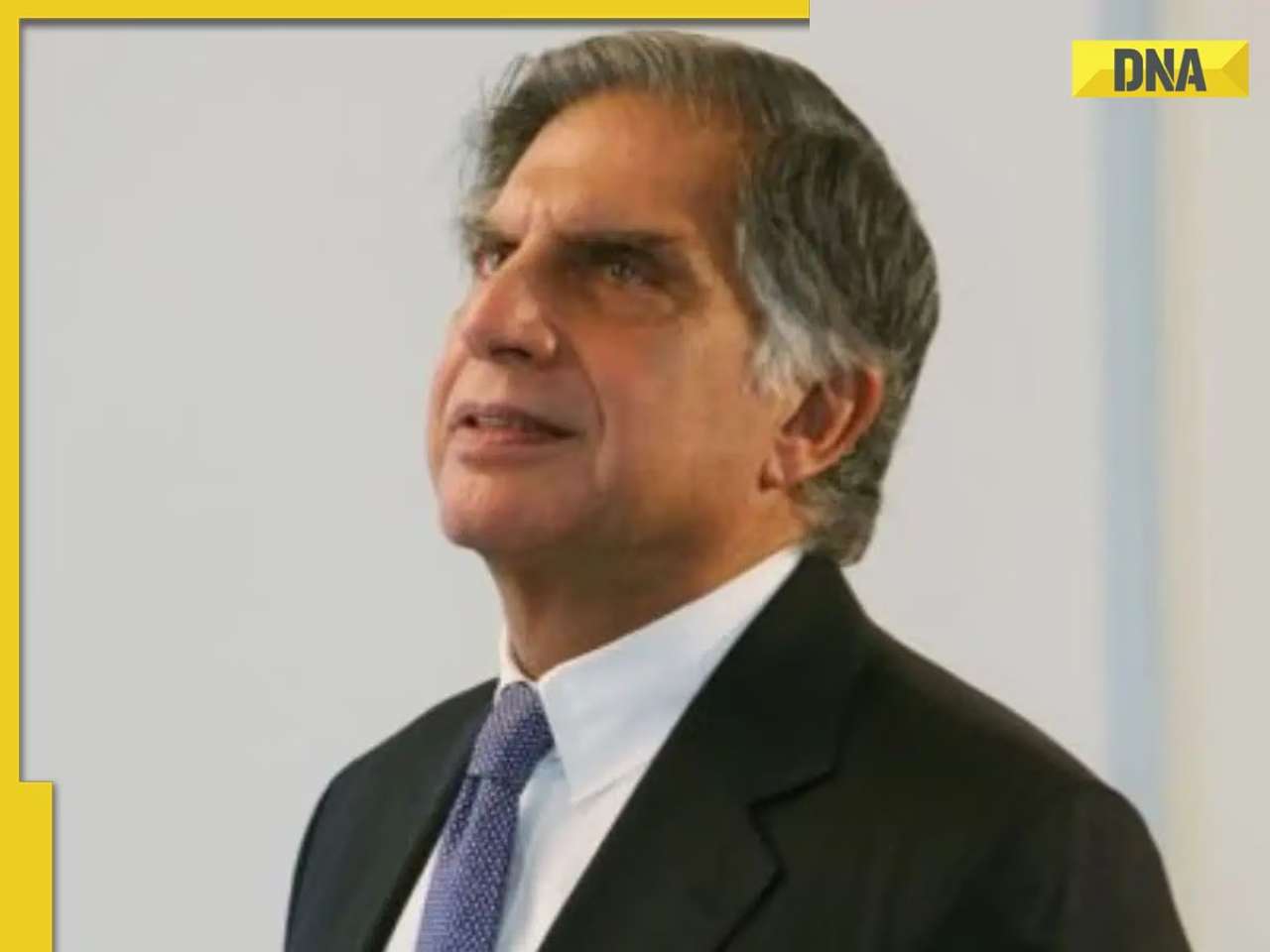

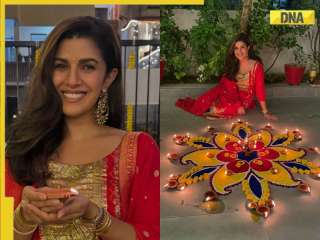


)
)
)
)
)
)
)
)
)
)
)
)
)
)
)
)





